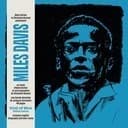Understanding the Interval Formula
D♭ Dorian follows the interval formula W-H-W-W-W-H-W (whole-half-whole-whole-whole-half-whole), producing the notes D♭-E♭-F♭-G♭-A♭-B♭-C♭-D♭. The defining characteristic of this mode is the natural sixth degree (B♭) which distinguishes it from D♭ Aeolian (Natural Minor) that would contain B double-flat. This single note difference creates a markedly brighter, more uplifting sound while preserving minor tonality. The scale contains the intervals: root, major 2nd, minor 3rd, perfect 4th, perfect 5th, major 6th, and minor 7th. This interval structure produces the characteristic "jazzy minor" quality that has made Dorian modes essential vocabulary in jazz, funk, and contemporary music across all styles.
Relationship to C♭ Major and Modal Context
As the second mode of C♭ Major, D♭ Dorian shares the exact same notes (seven flats) but emphasizes D♭ as the tonal center. Understanding this parent-scale relationship helps musicians visualize the mode—simply play C♭ Major starting and ending on D♭. While C♭ Major itself is rarely used in practical music-making due to its complex seven-flat notation, this theoretical relationship demonstrates how modes derive from parent scales. Compared to other D♭ modes like D♭ Phrygian (darker, with a ♭2) or the more dramatic D♭ Harmonic Minor, D♭ Dorian occupies a sophisticated middle ground. Musicians often compare D♭ Dorian with the more commonly used C♯ Dorian (its enharmonic equivalent) and popular Dorian scales like D Dorian to understand its unique tonal color.
Practical Applications in Jazz, Funk, and Celtic Music
D♭ Dorian appears frequently in jazz improvisations over minor 7th chords (D♭m7), where the raised sixth creates smoother melodic lines and avoids the heaviness of natural minor. Jazz pianists and horn players favor this mode when soloing over static minor chord vamps, as it provides melodic interest without requiring constant chord changes. In funk and R&B, D♭ Dorian delivers the groovy, uplifting minor vibe essential to the genre—the raised sixth (B♭) allows for more melodic freedom and creates the characteristic "floating" quality heard in classic funk compositions. Celtic and folk traditions utilize Dorian modes extensively to achieve the "ancient" or "modal" sound characteristic of traditional tunes, with D♭ Dorian offering a darker alternative to brighter keys. The i-IV progression (D♭m to G♭ major) is particularly characteristic of the Dorian sound, appearing in modal vamps and extended improvisational sections. Contemporary producers also use D♭ Dorian in hip-hop and electronic music for its sophisticated minor quality that avoids cliché.
Learning Tips and Practice Strategies
Begin by comparing D♭ Dorian directly with D♭ Natural Minor—play both scales consecutively while focusing on how the raised sixth (B♭ vs B double-flat) transforms the emotional quality. Practice the characteristic i-IV progression (D♭m7 to G♭7) while improvising D♭ Dorian patterns to internalize the mode's distinctive sound. Study famous Dorian examples like Miles Davis's "So What" in D Dorian, then transpose the melodic ideas to D♭ to understand how the mode functions across different keys. Since D♭ Dorian contains seven flats, consider practicing its enharmonic equivalent C♯ Dorian (five sharps) for easier reading, then apply the concepts back to flat-key contexts. Emphasize the sixth degree (B♭) in your melodies and improvisations—this note defines the Dorian character and distinguishes it from natural minor. Use two-chord modal vamps to explore: alternate between D♭m7 and G♭/D♭ while focusing on melodic patterns that highlight the bright minor quality. Compare D♭ Dorian with related modes like C Dorian and E♭ Dorian to understand how the Dorian sound functions in different tonal centers.





